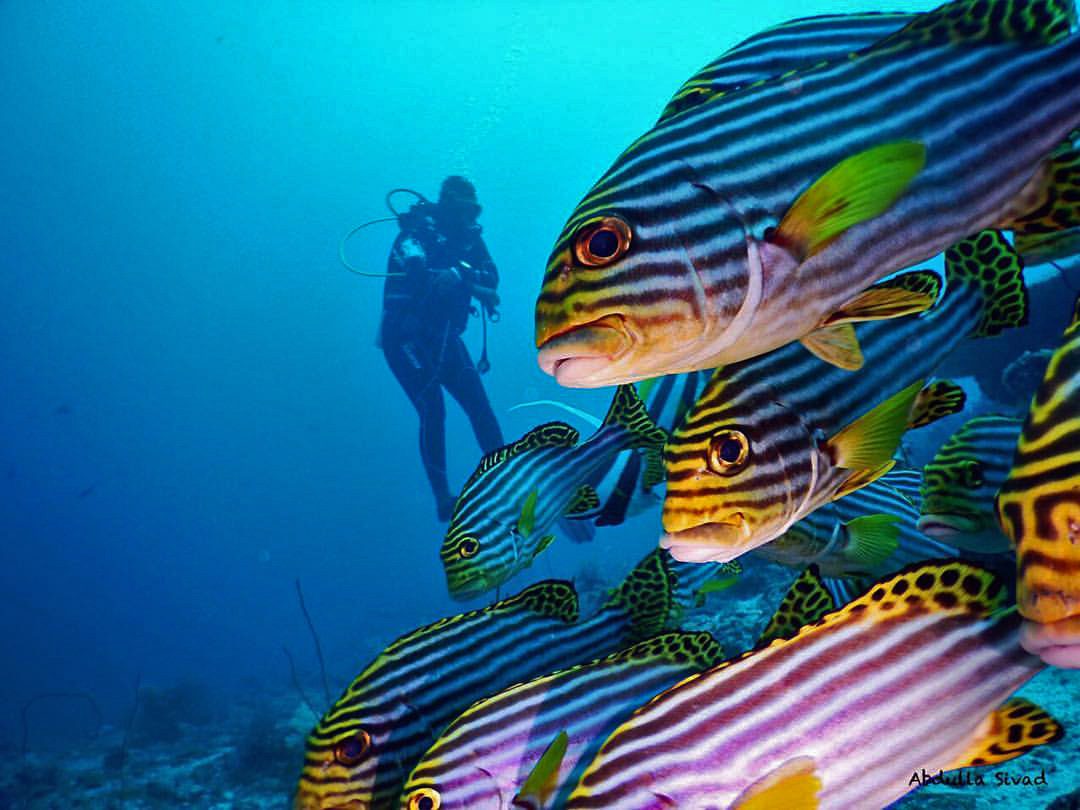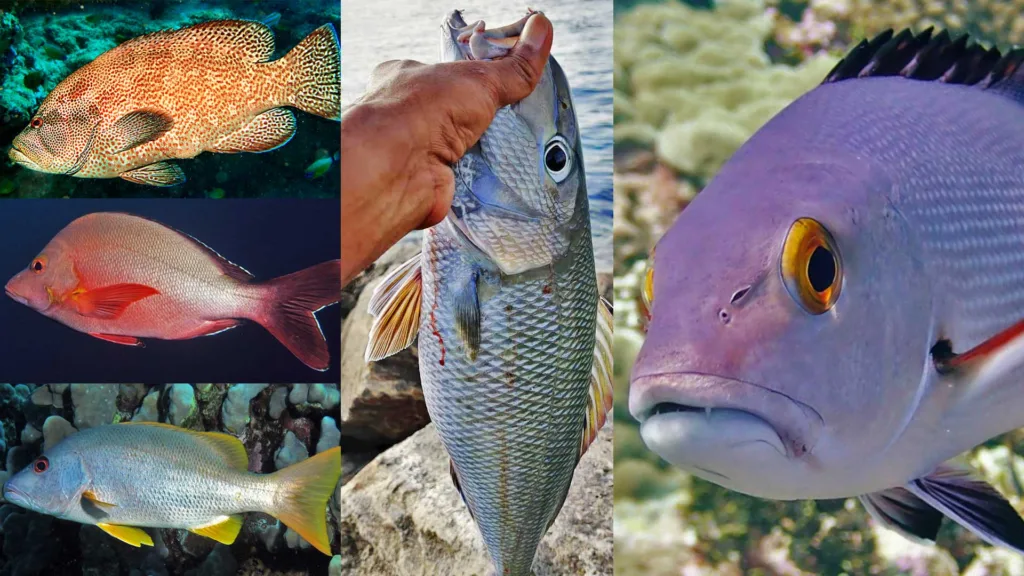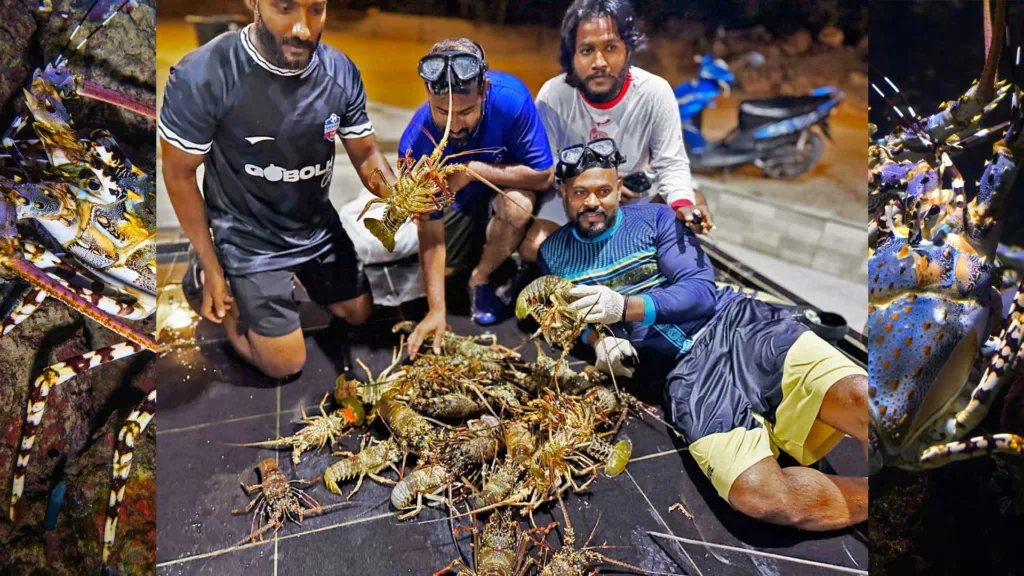The quiet and tranquil existence of this colorful fish is complemented by its mosaic of browns, yellows, and whites. What distinguishes them are their large, meaty lips and their yellow and white stripes. Swimming solo or in a group is not an issue for them. Inside the corals and stony reefs, Oriental sweetlips (locally known as kanduguruva) spend the day.
They forage at night. Their diet consists of invertebrates, crabs, and worms. In addition, they consume little fish. An immature oriental sweetlips might go unnoticed. Black blobs cover the bodies of juveniles in large numbers. However, as they mature, the spots turn into lengthy black stripes.
It’s hard to catch this fish. When fishing, this is among the most challenging fish to reel in. Iron bars, or dhagandu, are used to catch this fish in the Maldives. To spear fish, we descend to a depth of approximately six meters. We initially used sharpened iron bars. However, we are currently employing various spearfishing equipment to catch this species.
When I was a child, my father and his friends went fishing with iron bars. With a length of around two feet, the iron rod served as the “spear,” while the hardwood grip measured four to five feet. When wetsuits were out of stock, they resorted to rubbing oil over themselves to keep from getting too chilled when submerged.
They dove into the fore reef region, which had a steady slope down to the drop-off. Among the most frequent species that they caught were oriental sweetlips, surgeonfish, parrotfish, and blue sea chub.
Our island, Fuvahmulah, boasts numerous underwater cave-like features. Trenches in the reef flat can be found at the height of the reef. The oriental sweetlips spend their nights foraging in these areas. An often-repeated tale in the Maldives says that herons will only eat oriental sweet lips. This fish is absolutely perfect in every way.




